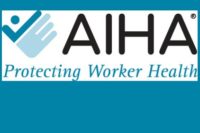Dave Johnson: What's Going On
Wouldn’t it be nice: A 'perfect' approach to mental health in the workplace

Credit: Getty Images
Imagine this. You work for a company that allows workers to use an app to get free access to in-person gyms and studios. That’s if they don’t want to work out at company on-site gyms at offices and manufacturing facilities. If you don’t like the app and want to work out at your favorite gym, the company provides gym reimbursements. You have access to other health apps such as the meditation service Calm, and even nutritionists.
Your CEO says, “We recognize that the care of our employees is paramount for business success. This involves taking care of their physical and mental well-being.”
You’re given a smart ring that measures your sleep, heart rate and activity. (All data is anonymous.) You have access to regular medical checkups.
Yoga classes, mindfulness and time-management workshops are regularly held and familiar to all employees.
Two times a year the company holds Mental Health stand-down days.
It also has a proactive listening program for spotting potential mental health risks early. Volunteers, called Mental Health Champions, are like first responders for employee mental health. They serve as a trained listening ear to identify potential trouble spots and can refer people to your company’s excellently marketed employee assistance program (EAP). Everyone is aware of the EAP (unusual in the corporate world), its services, and how to access it through promotions in ongoing internal communications.
You have time, space and flexibility in your schedule. Meetings are strongly discouraged on Wednesdays. The company is closed on Fridays so you can work from home.
No emails after 6 p.m. is a company policy.
Another policy: you are expected to take all your vacation days and HR tracks your use of vacation days to make sure you do.
A 30-minute virtual stress reduction session is periodically offered during regular work time.
The World Health Organization (WHO) “Guidelines on Mental Health at Work” have been implemented, and every health and safety professional has a copy.
Managers, supervisors and all employees have received training to recognize the signs of mental health issues, recognize the boundaries of their coaching and mentoring, and know when it’s time to recommend professional healthcare counseling and therapies.
Sound the alarm
Training also makes everyone aware of these alarming statistics:
• One in five adults will struggle with mental illness during their lifetime (American Psychiatric Association);
• 22.8% of U.S. adults experienced mental illness in 2021 – 57.8 million people (National Association on Mental Illness);
• One in three (32.3%) adults reported symptoms of anxiety or depression in 2023 (Kaiser Family
Foundation);
• 94% of workers were bullied at work in 2019, up from 75% in 2008 (Monster.com);
• 68% of workers do not feel completely safe at work (Wakefield Research);
• Only 28% of Americans are meeting physical activity guidelines set by the Centers for Disease Control and Prevention (CDC);
• 50 to 70 million Americans have chronic sleep disorders (National Institutes of Health);
• In 2021, an estimated 12.3 million American adults seriously thought about suicide; 3.5 million planned a suicide attempt, and 1.7 million attempted suicide (CDC).
A job that stresses you out
Mental health days are offered. Paid mental health days allow you to take time off to attend to your mental health and well-being. Perhaps you’re fatigued; behind on your sleep; stressed out or burned out because you have a job that lacks variety; under-uses your skills; has high levels of time pressure; continual subjection to deadlines; has unpredictable, long hours; a lack of control over workload and pacing; and your workspace is cramped, poorly lit, loud, with poor air quality.
Employees are trusted. Time and attendance policies state that as long as you are not exceeding the number of allowable sick or personal days per year, you will not be asked what you are using them for. And you know you won’t be asked. You can take a mental health day or use a sick day to care for your 18-month-old with the croup without raising eyebrows. More trust equals less stress.
Causes of the crisis
Training makes managers, supervisors and employees aware of some of the many reasons for the mental health crisis: parental pressures; electronic media; financial pressures; career pressures; divisive news; violent TV programming, movies, video games; social media; reduced face-to-face interactions; reduced parental contact; exposure to aggressive behavior; breakdown of the family unit and on and on.
Positive psychology is embraced at your company. The culture of the company values forging trusted relationships and promoting positive interactions such as coaching and mentoring to learn new skills and grow in your career.
Positive conversations are promoted. Managers, supervisors, and employees have learned how to model conversations that make people feel good, even if they don’t pertain to work.
Says your HR manager: “We all have mirror neurons, and when we share a small thing that was enjoyable, it lifts up our colleagues.”
Reality check
Wouldn’t it be nice, as the Beach Boys song goes, if our hypothetical “perfect world” company’s approach to mental health was multiplied thousands of times in reality.
Seriously, how many HR managers talk of mirror neurons? The fact is in 2023 many companies talk about the importance of their employees’ mental health, but action -- investments in time and money -- has been slow to follow. In the U.K., a massive gap exists between companies’ stated commitments and the actions that they are actually implementing. More than nine in ten U.K. companies see mental health as a critical workplace issue, but only one in three have established formal objectives and targets for addressing it, according to the Mental Health Benchmark report by CCLA Investment Management.
Do you think the story is any different in the U.S.?
More than 97 percent of large U.S. companies and 75 percent of midsize U.S. companies now offer EAPs, but as of 2016 fewer than 10 percent of employees were using them, according to the Society for Human Resource Management. That’s because many companies do a lazy job promoting EAPs and many employees don’t know they have one, or how to access the benefits.
“Usage is abysmal,” said Christopher Calvert of Sibson Consulting, in a 2019 article in HR Magazine. “Most companies aren’t communicating their EAPs well. It wouldn’t occur to employees to call.”
Suffering in silence
Poor communication isn’t the only reason employees won’t make that call. Some fear the information discussed won’t be kept confidential. Others believe mental illness represents a personal flaw, not a medical issue. There is also the feeling that mental illnesses are a personal or family matter and should be addressed without outside intervention. Circle the wagons. But many people don’t know how to talk about mental health, how to start a conversation. Others will suffer in silence out of job concerns, fear of missing out on promotions, fear of rejection, shame, lack of support, or fear of how others will react --being labeled negatively – lazy, weak, less dedicated, can’t tough it out.
There is a disconcerting gap between growing awareness of mental health disorders (90% of Americans believe the country is facing a mental health crisis, according to CNN) and the stubborn persistence of many of those same Americans to negatively stereotype mental health cases. The public stigma still exists.
Time to act
What actions have your company taken to address mental health and well-being in your workplace? If it’s far from our hypothetical company, as a professional responsible for the health and safety of the workforce, it is time to be a change agent.
Looking for a reprint of this article?
From high-res PDFs to custom plaques, order your copy today!







